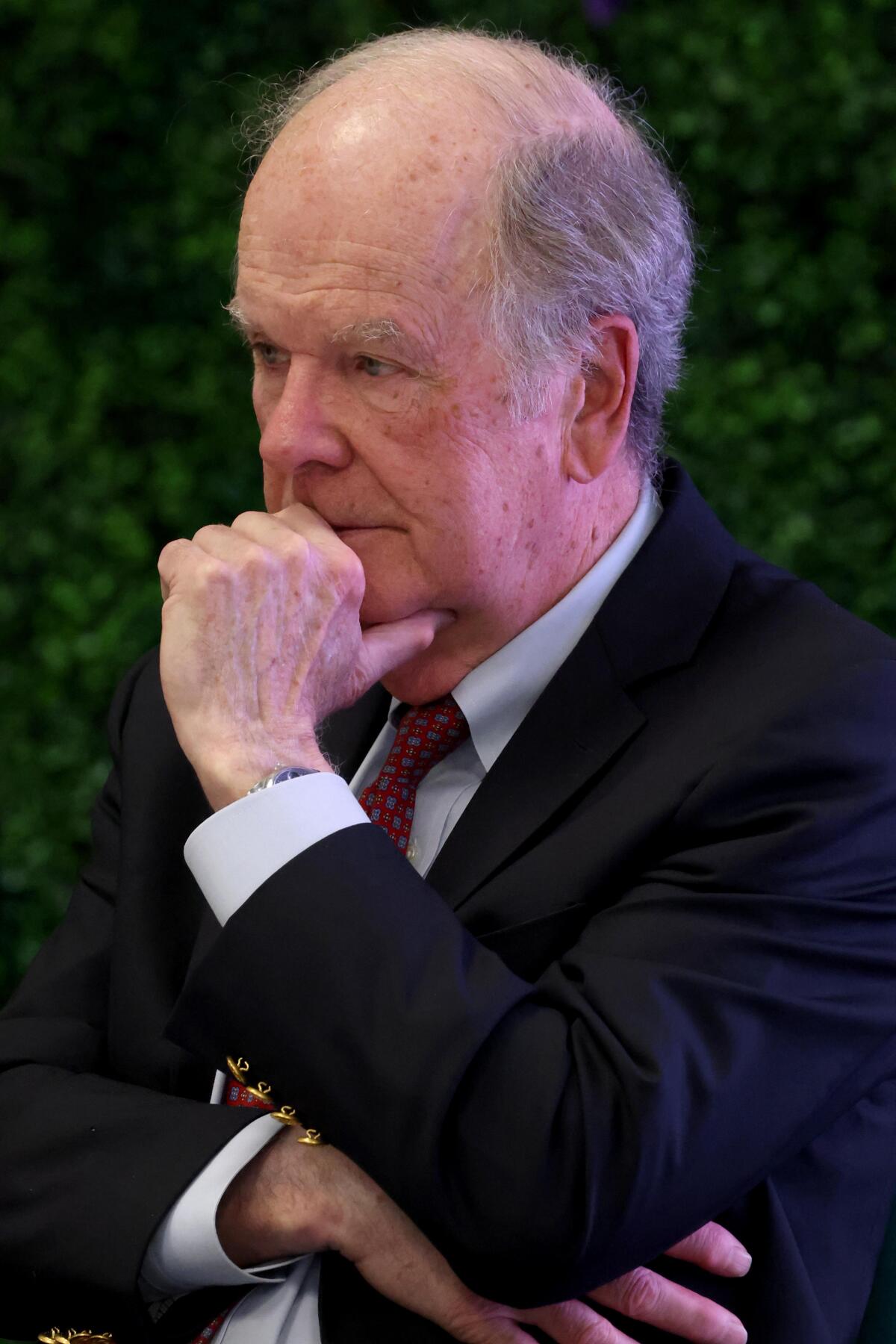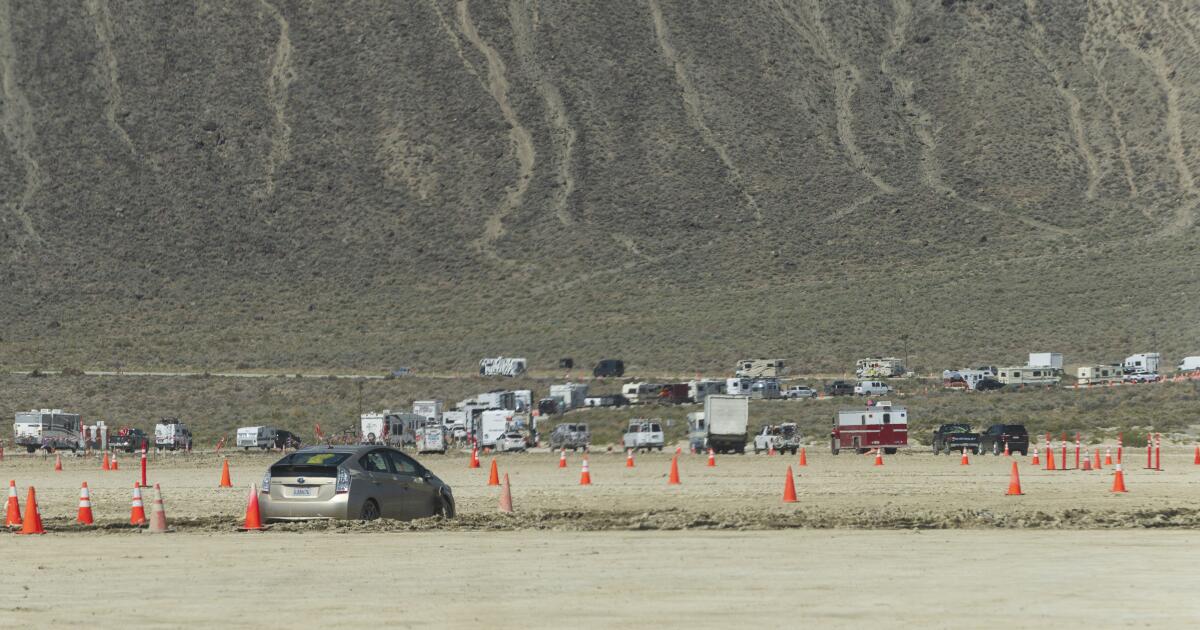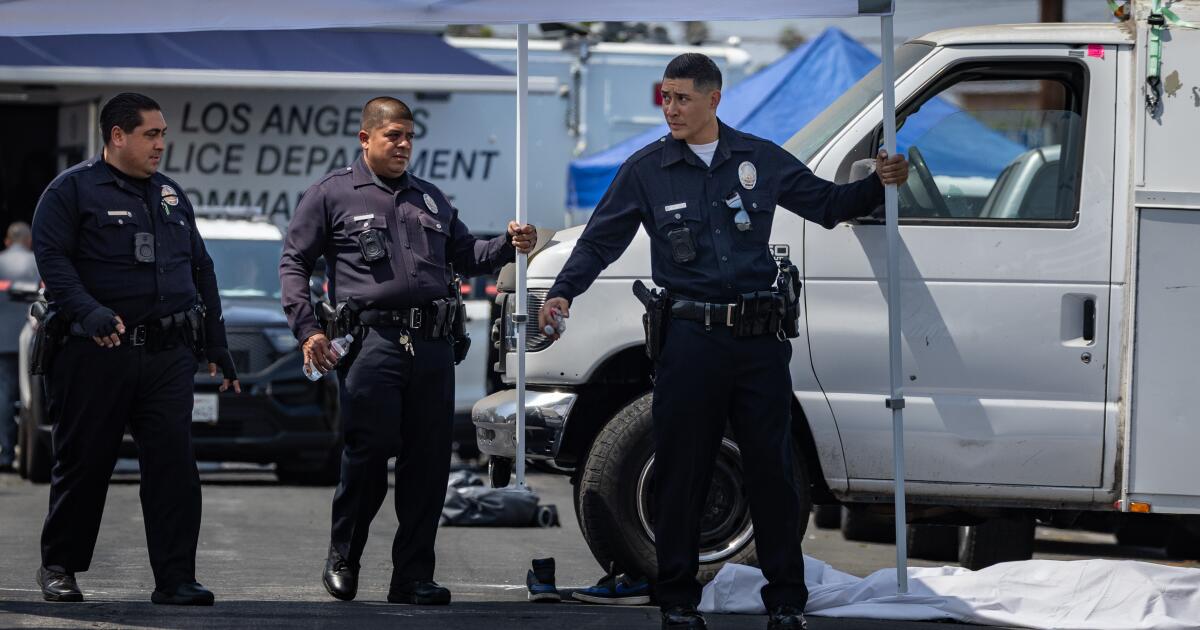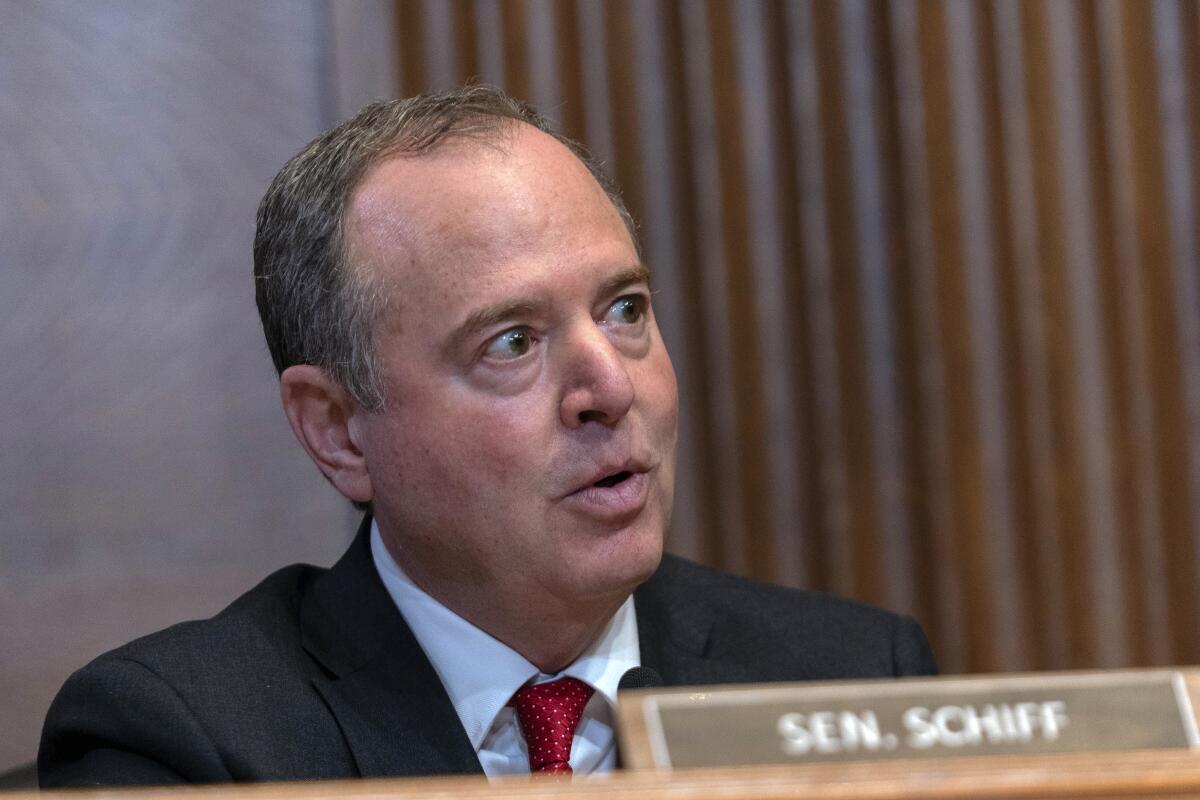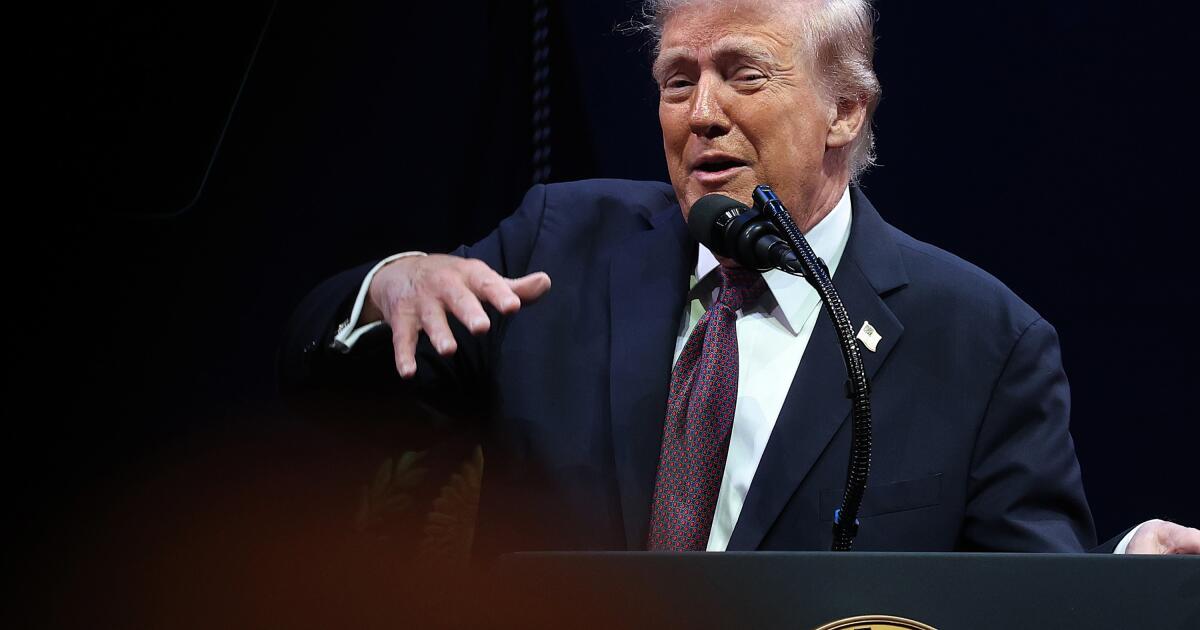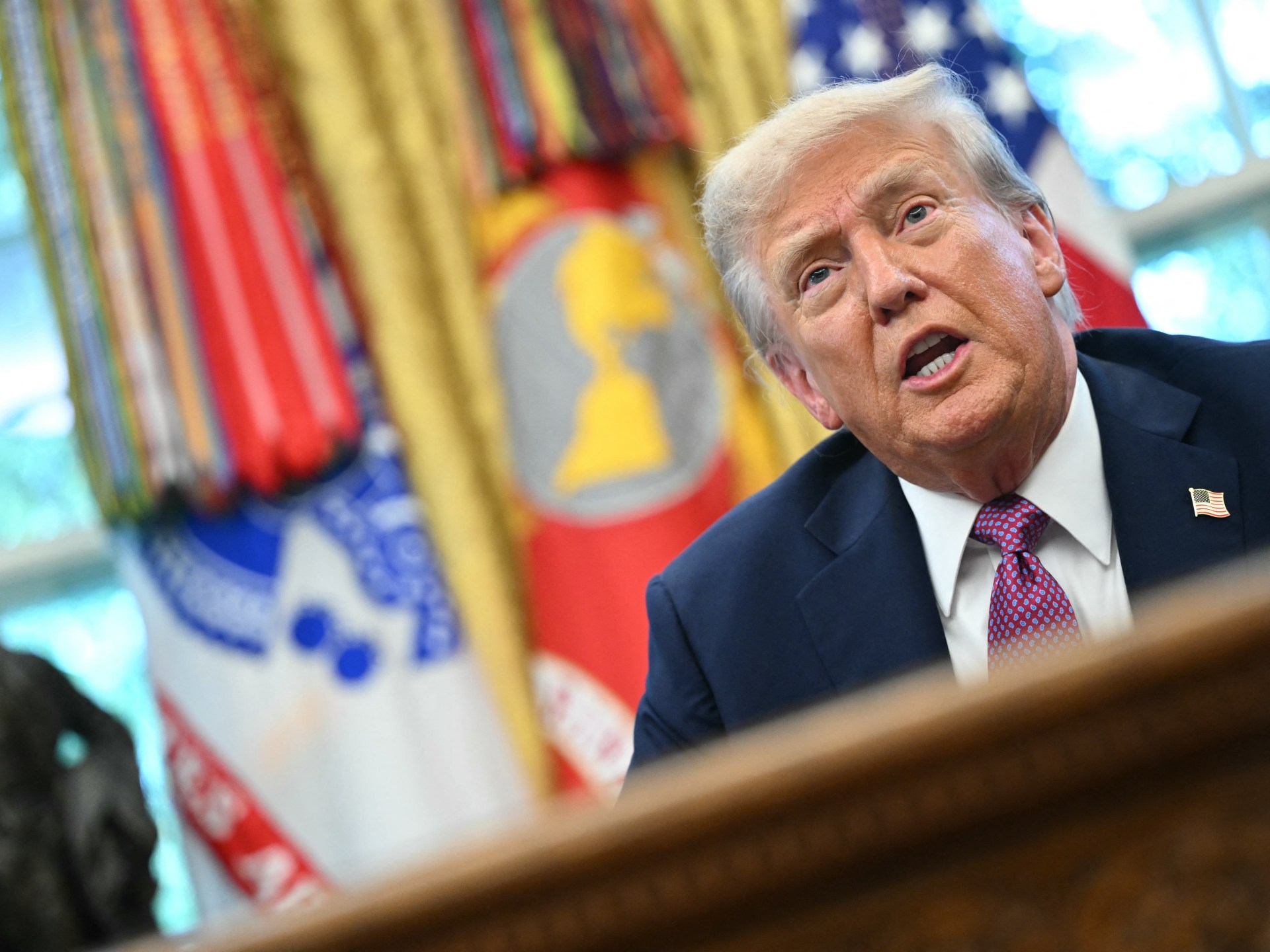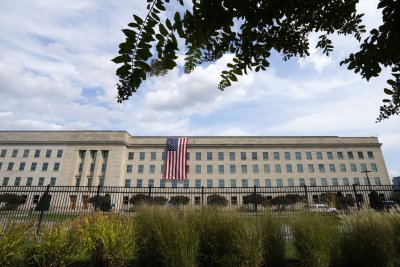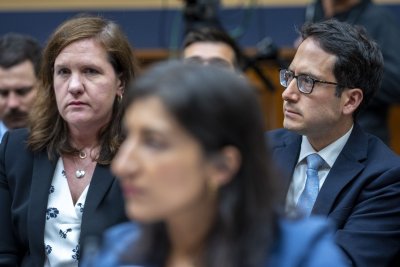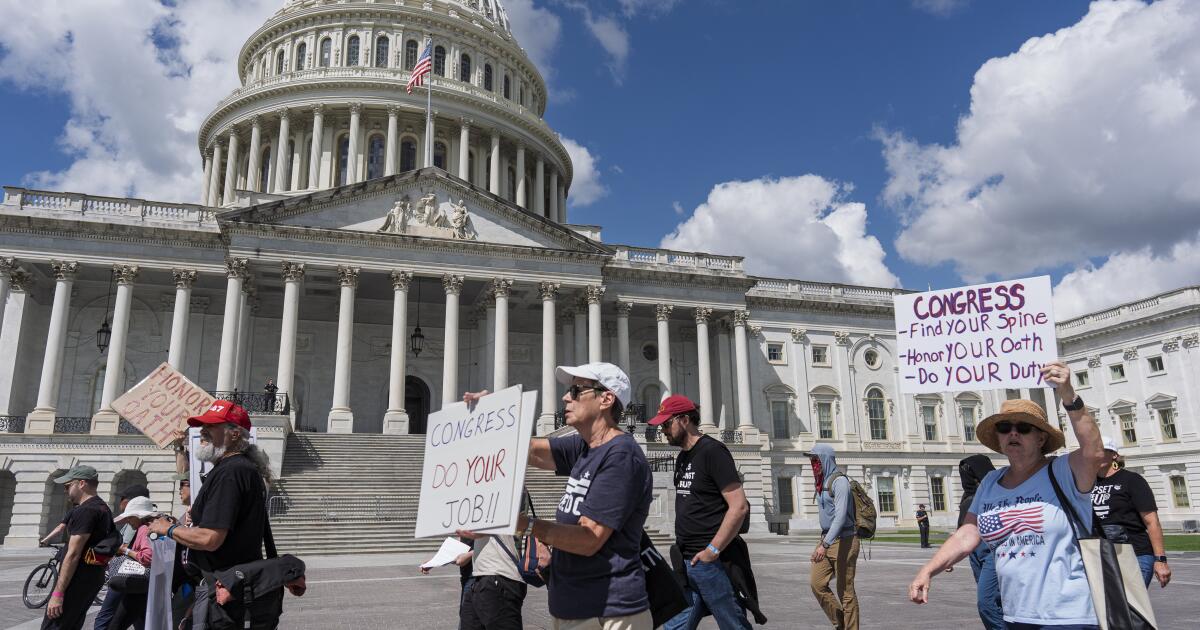They met at a festival. He was a deputy and a stalker, her suit claims
LA QUINTA — Briana Ortega had been home for all of three minutes when she heard a fist pounding against her door.
She opened it to find a Riverside County sheriff’s deputy “claiming a black man with dreadlocks had jumped over her backyard fence” and was trying to break into her La Quinta home, according to court records.
Almost immediately, Ortega, 29, suspected Deputy Eric Piscatella was there for other reasons. The encounter last summer wasn’t the first time they’d met. It wasn’t even the first time he’d shown up at her home unannounced, according to an arrest affidavit and claims in a civil lawsuit.
“You look pretty without makeup … sorry I don’t mean to be rude or unprofessional,” Piscatella said, after spending a scant few seconds looking out a window for the purported suspect, according to a recording of the incident.
It was the fourth time in less than a year that Piscatella had either shown up at Ortega’s home or contacted her without a legitimate law enforcement purpose, according to the affidavit and lawsuit. Ortega shared text messages showing the deputy tried to flirt with her and ask her out on dates, but she rebuffed him at every turn.
A former Riverside County sheriff’s deputy is accused in a lawsuit of using law enforcement resources to pursue a woman he met at a public event.
(Gary Coronado/Los Angeles Times)
Last year, Riverside County prosecutors charged Piscatella, 30, with seven counts of illegally using law enforcement databases to look up information about Ortega.
But instead of resolving the situation, Ortega says, the way Piscatella’s case played out in criminal court has only prolonged her ordeal.
Ortega said she remains “terrified” of Piscatella and declined to testify against him. In July, a Riverside County judge downgraded all charges against Piscatella to misdemeanors. He pleaded guilty and received probation, avoiding jail time.
Last month, Ortega filed a federal civil rights lawsuit against Piscatella, the department and Riverside County Sheriff Chad Bianco, a leading Republican candidate in the 2026 governor’s race.
Riverside County Sheriff Chad Bianco kicks off his campaign to run for governor at Avila’s Historic 1929 center on Feb. 17 in Riverside.
(Gina Ferazzi/Los Angeles Times)
“I feel like with him getting the misdemeanor, nothing is ever going to change… If it takes me having to [file this lawsuit], I will, if it helps,” she said.
Piscatella declined to comment through his defense attorney.
A spokesperson for the Riverside County Sheriff’s Department said Piscatella resigned last October after roughly five years on the job. His ability to work as a police officer in California is suspended, accreditation records show, but without a felony conviction it could be restored.
Ortega recalled her first run-in with Piscatella as innocent enough.
She was attending what she described as a “family fair,” with her two sons in Coachella in September 2023, enjoying amusement rides and carnival games when she said her oldest son ran up to a group of sheriff’s deputies who were giving out stickers. Piscatella was among them, according to Ortega, who said they had a polite but forgettable conversation.
They did not exchange contact information, but a few months later, in January of 2024, Ortega said, she got a text from an unknown number.
The texter claimed to be her “personal officer.” A fitness influencer with more than 100,000 followers on TikTok and Instagram, Ortega gets random flirtatious messages from men. So she shrugged it off.
That same month, Piscatella searched Ortega’s name and the city of La Quinta in both the California Law Enforcement Telecommunications System and other sheriff’s databases shortly before the texts were sent, according to court records. In Ortega’s civil suit, she alleged this was how Piscatella tracked her down.
One month later, Piscatella showed up at Ortega’s La Quinta home while she was at work, according to her lawsuit. Her mother answered the door, and was “alarmed” when the deputy questioned where her daughter was. Still, Ortega wasn’t bothered.
“I’m like, he’s a cop, he can’t be that crazy. He’s on the force for a reason … of course he knows where I live,” she said.
Echoing claims in her lawsuit, she added: “I’m not thinking he’s going to continue to look for me or stalk me. If I would have known, I would have complained.”
Ortega was so unfazed that she actually went to Piscatella for help a month later. Her younger sister had been the victim of an assault and was struggling to get attention from the Sheriff’s Department. So Ortega contacted the man who claimed to be her “personal officer.”
But when Ortega began describing the purported crime, Piscatella responded by asking her to send a “selfie” and insisting they should go to the gym together. Annoyed, Ortega eventually changed her number when instead of help, all she got was a picture of Piscatella wearing Sheriff’s Department clothes, according to text messages.
Court records show Piscatella continued to use law enforcement databases to keep tabs on Ortega in the months that followed. In May 2024, he searched her name and ran her license plate, according to court records. He did the same in July, right before showing up at Ortega’s house, claiming he saw the man with dreadlocks break in.
At that point, Piscatella’s interest in Ortega had turned into an “obsession,” according to her lawsuit. Since he arrived just minutes after she’d returned from a trip to San Diego, Ortega said it felt like Piscatella was “waiting for me.” She alleges in her lawsuit that the deputy “used law enforcement resources and databases … to stalk her.”
After letting him in, she surreptitiously recorded the deputy standing in her living room, talking to her children. In the lawsuit, Ortega said she was “confused, scared and uncomfortable,” especially after Piscatella asked for her new number, which she gave him out of “fear.”
Piscatella texted her a short time later, according to messages reviewed by The Times, describing her kids as “so cool.”
“I don’t feel comfortable with everything that just happened. Please do not contact me again,” Ortega wrote back.
Briana Ortega filed a lawsuit alleging that she has been living in fear of a former Riverside County sheriff’s deputy.
(Gina Ferazzi/Los Angeles Times)
She made a complaint to the Sheriff’s Department the same day. Court records show the department launched an internal investigation and quickly determined Piscatella had used law enforcement databases to look up information on Ortega several times, according to an affidavit seeking a warrant for his arrest.
The affidavit shows there was “no corresponding call for service” related to the day Piscatella showed up at Ortega’s home and claimed someone was breaking in.
Riverside County prosecutors filed seven felony charges against Piscatella.
Ortega said she refused to testify because, even though the Sheriff’s Department had presented a case against one of their own, she feared Piscatella or a fellow deputy might seek retribution against her.
At a July court hearing in Indio, Piscatella made an open plea to the court seeking to downgrade each charge to a misdemeanor and avoid jail time, according to a transcript of the proceeding.
Riverside County Deputy Dist. Atty. Natasha Sorace pleaded with Superior Court Judge Helios J. Hernandez not to accept the lesser charges.
“The defendant was a police officer — a sheriff’s deputy, who used his position of power and the information he had access to as a result of that position to put someone in the community in significant fear for their safety,” Sorace said.
“He searched information — conducted a search about a particular individual and used that information to come up with an excuse to get into that woman’s house, where he proceeded to hit on her and make her feel uncomfortable in her own on home.”
But Hernandez rebuffed her attempts to argue the point further. In his view, “nothing actually happened.”
“He never, like, broke into the house or threatened her,” Hernandez said, according to a transcript of the hearing.
Hernandez sentenced Piscatella to probation and community service and ordered him to stay away from Ortega. Records show prosecutors have appealed the decision.
A spokeswoman for the district attorney’s office would not say if Ortega’s refusal to testify affected their ability to bring other charges, including the stalking allegation she made in the civil suit.
The Riverside County Sheriff’s Department’s spokesperson declined to comment on the pending litigation.
The entire ordeal left Ortega feeling like law enforcement failed her at every level. She noted that Piscatella still knows where she lives.
While she previously did not hold a negative view of police, now she says she turns the other direction and grows anxious anytime she sees a Sheriff’s Department cruiser.
“It’s a betrayal of trust from law enforcement … who do you call when it’s the police who are the problem?” asked her attorney, Jamal Tooson. “When can you ever feel safe? You almost feel trapped, in your own house.”

